Презентация i read it but i dont get


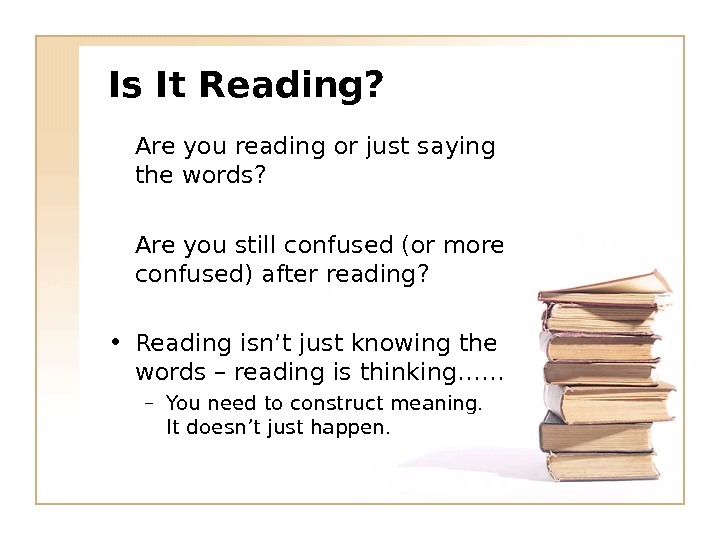

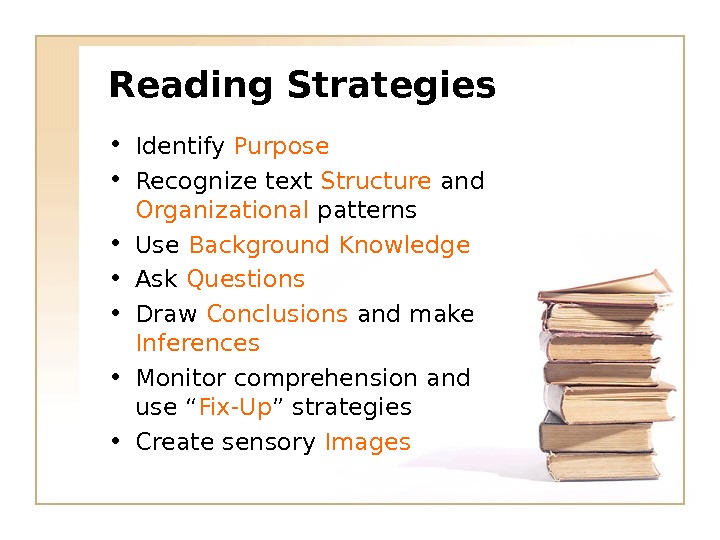


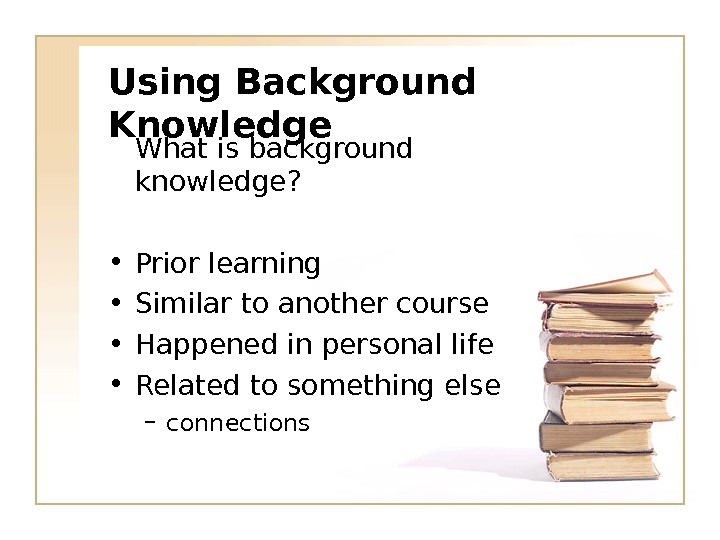
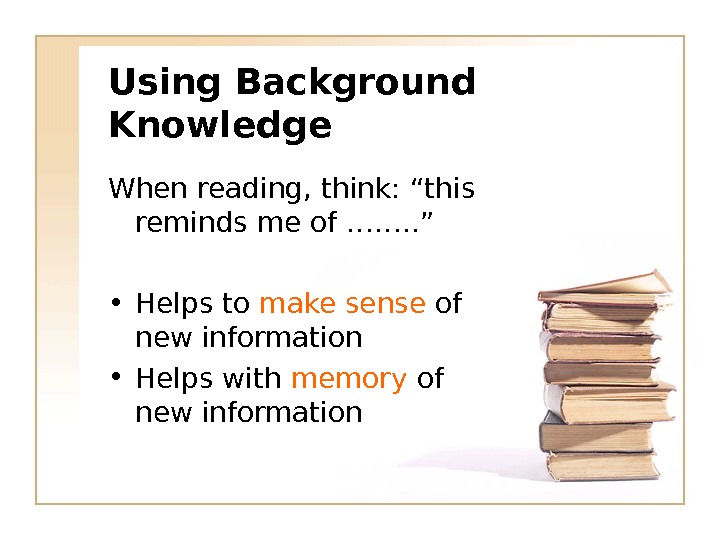
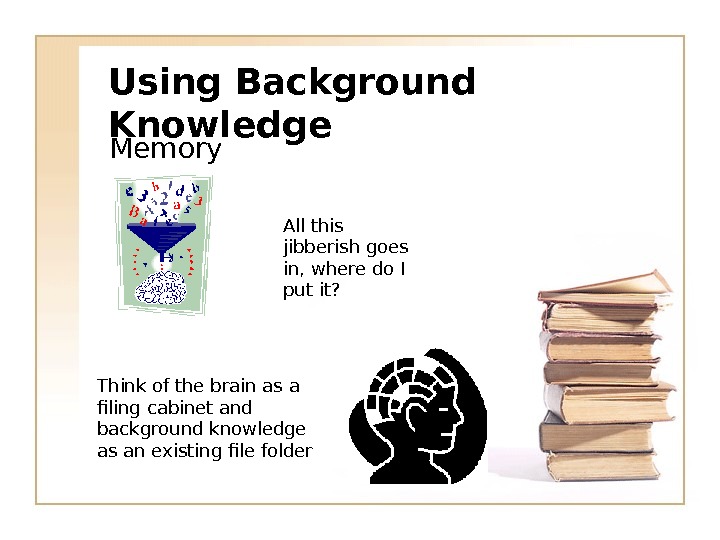
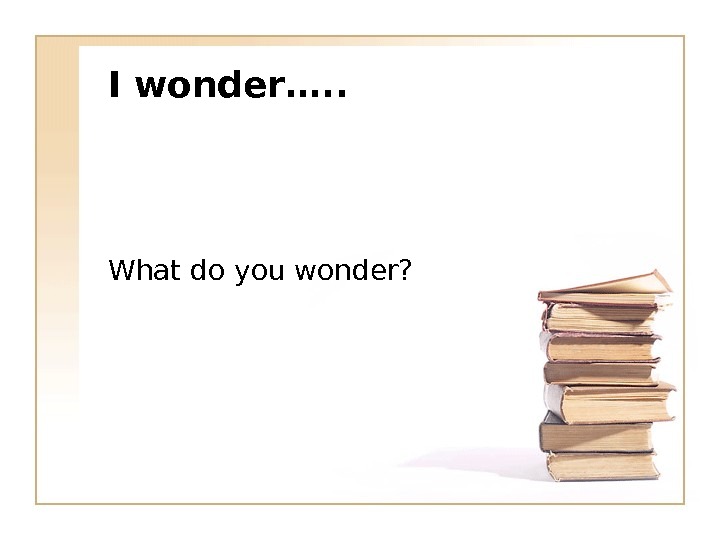
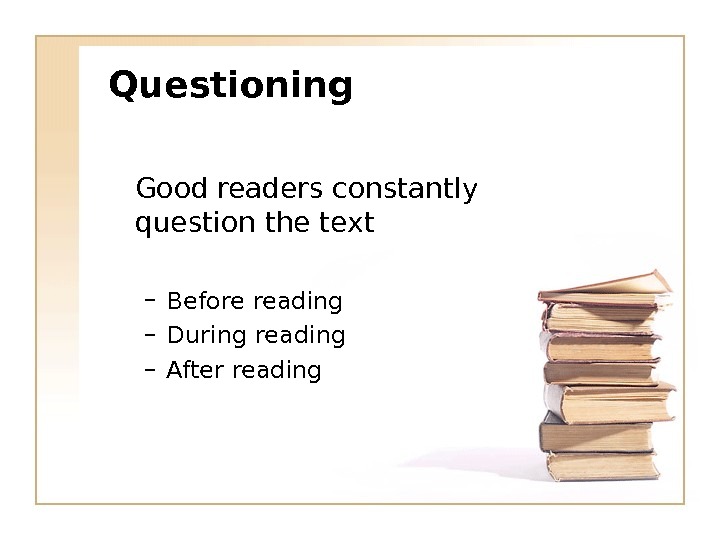




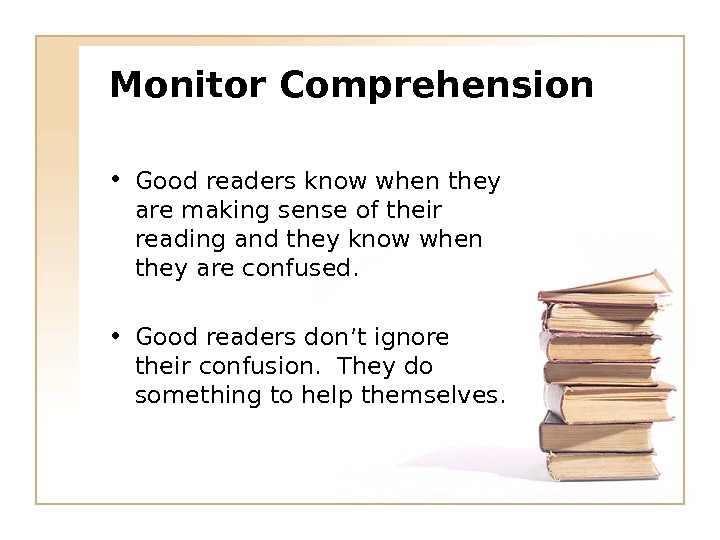

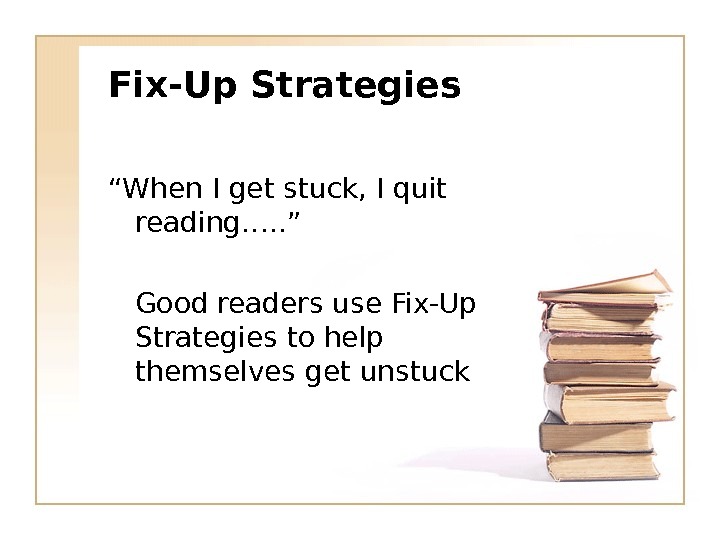


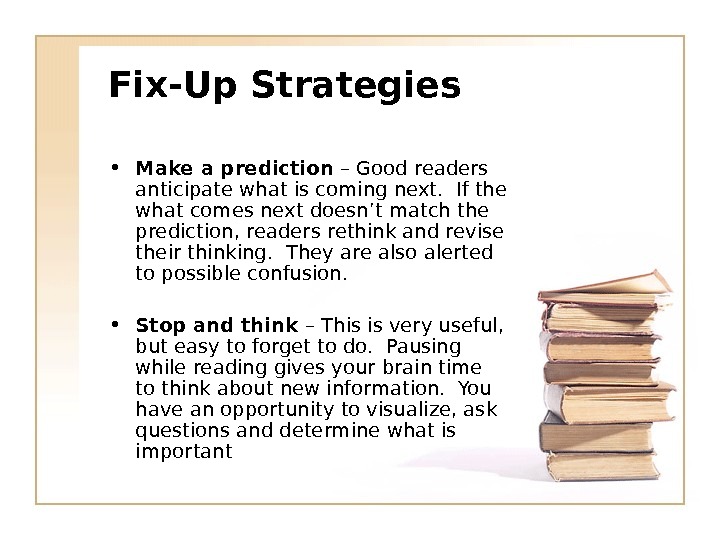











- Размер: 308.5 Кб
- Количество слайдов: 32
Описание презентации Презентация i read it but i dont get по слайдам
 I Read It, But I Don’t Get It Source Material: Chris Tovani, I Read It, But I Don’t Get It Chris Tovani, Do I Really Have To Teach Reading?
I Read It, But I Don’t Get It Source Material: Chris Tovani, I Read It, But I Don’t Get It Chris Tovani, Do I Really Have To Teach Reading?
 Is It Reading? Are you reading or just saying the words? Are you still confused (or more confused) after reading? • Reading isn’t just knowing the words – reading is thinking…… – You need to construct meaning. It doesn’t just happen.
Is It Reading? Are you reading or just saying the words? Are you still confused (or more confused) after reading? • Reading isn’t just knowing the words – reading is thinking…… – You need to construct meaning. It doesn’t just happen.
 How Do I “ Construct ” Meaning? In order to construct meaning, readers need to use different strategies
How Do I “ Construct ” Meaning? In order to construct meaning, readers need to use different strategies
 Reading Strategies • Identify Purpose • Recognize text Structure and Organizational patterns • Use Background Knowledge • Ask Questions • Draw Conclusions and make Inferences • Monitor comprehension and use “ Fix-Up ” strategies • Create sensory Images
Reading Strategies • Identify Purpose • Recognize text Structure and Organizational patterns • Use Background Knowledge • Ask Questions • Draw Conclusions and make Inferences • Monitor comprehension and use “ Fix-Up ” strategies • Create sensory Images
 Identifying the Purpose Knowing the purpose helps to determine what is important – Know what you are going to use information for – Saves time – Know what to skip
Identifying the Purpose Knowing the purpose helps to determine what is important – Know what you are going to use information for – Saves time – Know what to skip
 Text Structure and Organization • Section headings • Text conventions – bold , italic, underline , all CAPS • Vocabulary — highlighting • “ Learn” – SOL purpose • Examples • Think and Discuss • Practice – Guided – Independent – Problem Solving
Text Structure and Organization • Section headings • Text conventions – bold , italic, underline , all CAPS • Vocabulary — highlighting • “ Learn” – SOL purpose • Examples • Think and Discuss • Practice – Guided – Independent – Problem Solving
 Using Background Knowledge What is background knowledge? • Prior learning • Similar to another course • Happened in personal life • Related to something else – connections
Using Background Knowledge What is background knowledge? • Prior learning • Similar to another course • Happened in personal life • Related to something else – connections
 Using Background Knowledge When reading, think: “this reminds me of ……. . ” • Helps to make sense of new information • Helps with memory of new information
Using Background Knowledge When reading, think: “this reminds me of ……. . ” • Helps to make sense of new information • Helps with memory of new information
 Using Background Knowledge Memory All this jibberish goes in, where do I put it? Think of the brain as a filing cabinet and background knowledge as an existing file folder
Using Background Knowledge Memory All this jibberish goes in, where do I put it? Think of the brain as a filing cabinet and background knowledge as an existing file folder
 I wonder…. . What do you wonder?
I wonder…. . What do you wonder?
 Questioning Good readers constantly question the text – Before reading – During reading – After reading
Questioning Good readers constantly question the text – Before reading – During reading – After reading
 Questioning Questions before reading: • Give a purpose for reading – to answer the questions • Focus the reader on the text while looking for answers – the mind is less likely to wander
Questioning Questions before reading: • Give a purpose for reading – to answer the questions • Focus the reader on the text while looking for answers – the mind is less likely to wander
 Questioning Questions during reading: • To clarify information learned or missed • To wonder why something happens
Questioning Questions during reading: • To clarify information learned or missed • To wonder why something happens
 Questioning Questions after reading: • Encourage more thinking and deeper analysis • Lead reader to make inferences • May lead to further reading/research
Questioning Questions after reading: • Encourage more thinking and deeper analysis • Lead reader to make inferences • May lead to further reading/research
 Inferences Infer……. who!? !? An inference is a conclusion formed by reasoning based on facts or previously stated information
Inferences Infer……. who!? !? An inference is a conclusion formed by reasoning based on facts or previously stated information
 Monitor Comprehension • Good readers know when they are making sense of their reading and they know when they are confused. • Good readers don’t ignore their confusion. They do something to help themselves.
Monitor Comprehension • Good readers know when they are making sense of their reading and they know when they are confused. • Good readers don’t ignore their confusion. They do something to help themselves.
 Monitor Comprehension • When reading, you should have two voices inside your head – Reciting voice – reading the words – Interacting voice – making connections, asking questions, agreeing/disagreeing, combines with pictures • Listen to voices to know if you understand
Monitor Comprehension • When reading, you should have two voices inside your head – Reciting voice – reading the words – Interacting voice – making connections, asking questions, agreeing/disagreeing, combines with pictures • Listen to voices to know if you understand
 Fix-Up Strategies “ When I get stuck, I quit reading…. . ” Good readers use Fix-Up Strategies to help themselves get unstuck
Fix-Up Strategies “ When I get stuck, I quit reading…. . ” Good readers use Fix-Up Strategies to help themselves get unstuck
 Fix-Up Strategies • Re-read • Make a connection between the text and background knowledge • Make a prediction • Stop and Think • Ask a question • Write about what you have read • Visualize • Use print conventions and text structure
Fix-Up Strategies • Re-read • Make a connection between the text and background knowledge • Make a prediction • Stop and Think • Ask a question • Write about what you have read • Visualize • Use print conventions and text structure
 Fix-Up Strategies • Re-reading – Is there something you can go back and read that will help understanding? Most readers do this already. Sometimes, just re-reading a word or a sentence is enough • Make a connection – sometimes you have information about a topic in your head that isn’t being used. Use memories, personal experiences, or information about the subject to help visualize, predict, ask questions and remember what you read
Fix-Up Strategies • Re-reading – Is there something you can go back and read that will help understanding? Most readers do this already. Sometimes, just re-reading a word or a sentence is enough • Make a connection – sometimes you have information about a topic in your head that isn’t being used. Use memories, personal experiences, or information about the subject to help visualize, predict, ask questions and remember what you read
 Fix-Up Strategies • Make a prediction – Good readers anticipate what is coming next. If the what comes next doesn’t match the prediction, readers rethink and revise their thinking. They are also alerted to possible confusion. • Stop and think – This is very useful, but easy to forget to do. Pausing while reading gives your brain time to think about new information. You have an opportunity to visualize, ask questions and determine what is important
Fix-Up Strategies • Make a prediction – Good readers anticipate what is coming next. If the what comes next doesn’t match the prediction, readers rethink and revise their thinking. They are also alerted to possible confusion. • Stop and think – This is very useful, but easy to forget to do. Pausing while reading gives your brain time to think about new information. You have an opportunity to visualize, ask questions and determine what is important
 Fix-Up Strategies • Ask a question – Good readers understand that all of the answers will not be found in the text. They use clues from the text and background knowledge to make conclusions. You can seek answers to your questions from: • Yourself • Someone else • Find another resource
Fix-Up Strategies • Ask a question – Good readers understand that all of the answers will not be found in the text. They use clues from the text and background knowledge to make conclusions. You can seek answers to your questions from: • Yourself • Someone else • Find another resource
 Fix-Up Strategies • Write about what you’ve read – Writing down what you think about the text helps to clarify your thinking. Sometimes just a few side notes is enough; other times writing a summary is more helpful • Visualize – when meaning breaks down, good readers create images in their heads to help make sense of what the words are saying.
Fix-Up Strategies • Write about what you’ve read – Writing down what you think about the text helps to clarify your thinking. Sometimes just a few side notes is enough; other times writing a summary is more helpful • Visualize – when meaning breaks down, good readers create images in their heads to help make sense of what the words are saying.
 Fix-Up Strategies • Use print conventions – as discussed earlier, key words, bold or italicized words, CAPITALIZED letters, underlining and punctuation can all be used to help understanding. You can also see how the author wants the piece to sound and what he thinks is important
Fix-Up Strategies • Use print conventions – as discussed earlier, key words, bold or italicized words, CAPITALIZED letters, underlining and punctuation can all be used to help understanding. You can also see how the author wants the piece to sound and what he thinks is important
 Fix-Up Strategies • Use text structure – recognizing how a piece is organized helps the reader locate information more quickly. As discussed previously, use table of contents and section headings. You don’t have to read everything from cover to find information
Fix-Up Strategies • Use text structure – recognizing how a piece is organized helps the reader locate information more quickly. As discussed previously, use table of contents and section headings. You don’t have to read everything from cover to find information
 Tools • Sticky Notes/Marking Text • Double-Entry Diaries
Tools • Sticky Notes/Marking Text • Double-Entry Diaries
 Sticky Notes • Use sticky notes while reading to mark areas of importance • Write your thinking next to the words that caused that thought: – Connections: “This reminds me of…. ” – Questions: “I wonder…. ” – Conclusions: “I think…. ” – Statements: “This is important because…” – Confusion: “I don’t understand…. ” • Make sure to go back to your notes
Sticky Notes • Use sticky notes while reading to mark areas of importance • Write your thinking next to the words that caused that thought: – Connections: “This reminds me of…. ” – Questions: “I wonder…. ” – Conclusions: “I think…. ” – Statements: “This is important because…” – Confusion: “I don’t understand…. ” • Make sure to go back to your notes
 Double-Entry Diary • Helps to organize thoughts about text – Left side: direct quotes with page number – Right side: What you think: • Reminds me of…. • This is important because…. • I am confused because…. • I think this means…. • The picture in my head looks like….
Double-Entry Diary • Helps to organize thoughts about text – Left side: direct quotes with page number – Right side: What you think: • Reminds me of…. • This is important because…. • I am confused because…. • I think this means…. • The picture in my head looks like….
 Tools Double-Entry Diaries – Fold paper in half lengthwise (like a hotdog bun) – Write quotes or facts from text on left side – Write your thoughts on the right side (or draw a picture)
Tools Double-Entry Diaries – Fold paper in half lengthwise (like a hotdog bun) – Write quotes or facts from text on left side – Write your thoughts on the right side (or draw a picture)
 Double-Entry Diary Fact or Quote From book What I think…. The most important thing is…. I wonder…. This reminds me of…. I am confused about…. I’m picturing…. Remember to include page number
Double-Entry Diary Fact or Quote From book What I think…. The most important thing is…. I wonder…. This reminds me of…. I am confused about…. I’m picturing…. Remember to include page number
 Reading Strategies Remember…… • Using reading strategies can make reading more meaningful and helpful, but you have to practice using strategies • Not all strategies will work in all situations
Reading Strategies Remember…… • Using reading strategies can make reading more meaningful and helpful, but you have to practice using strategies • Not all strategies will work in all situations
 I Read It, But I Don’t Get It • Hopefully, you say this less in the future • This Powerpoint presentation can be found online at: http: //mrpmathzone. weebly. com
I Read It, But I Don’t Get It • Hopefully, you say this less in the future • This Powerpoint presentation can be found online at: http: //mrpmathzone. weebly. com

